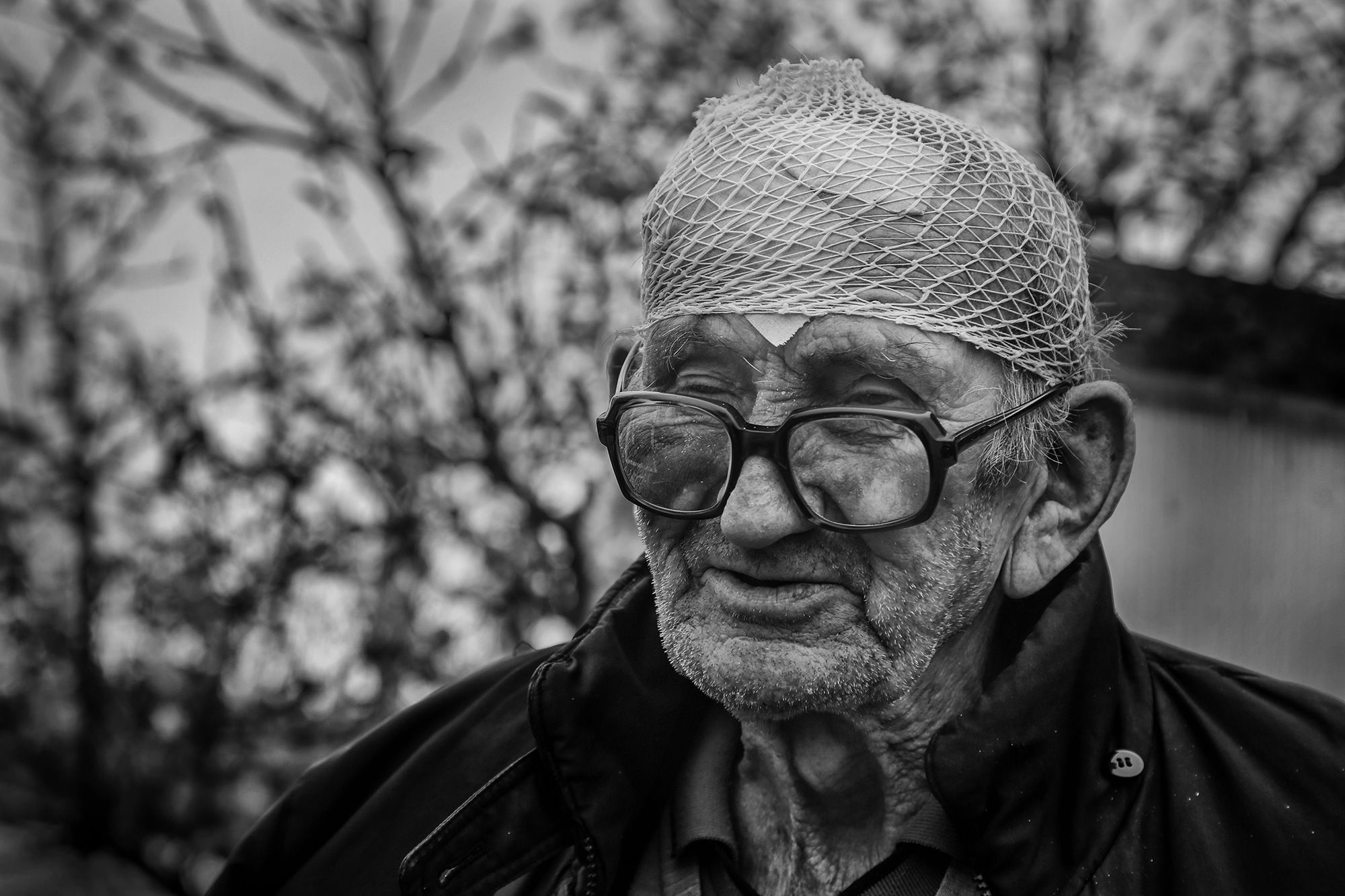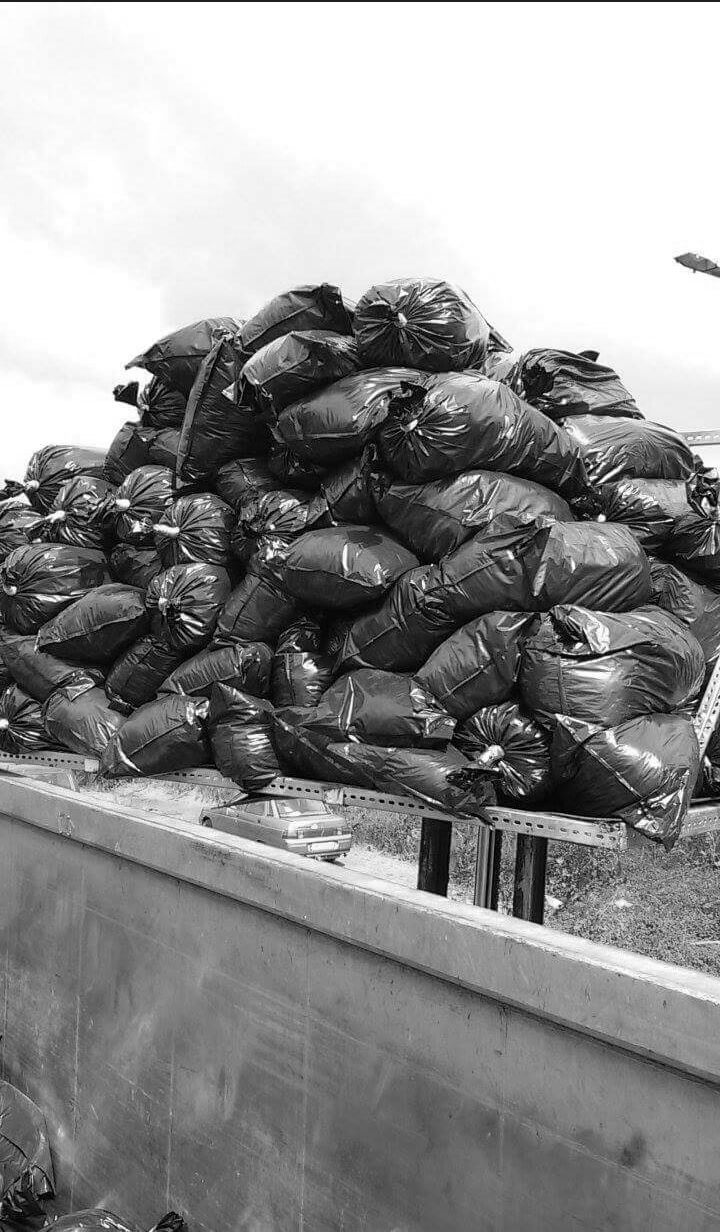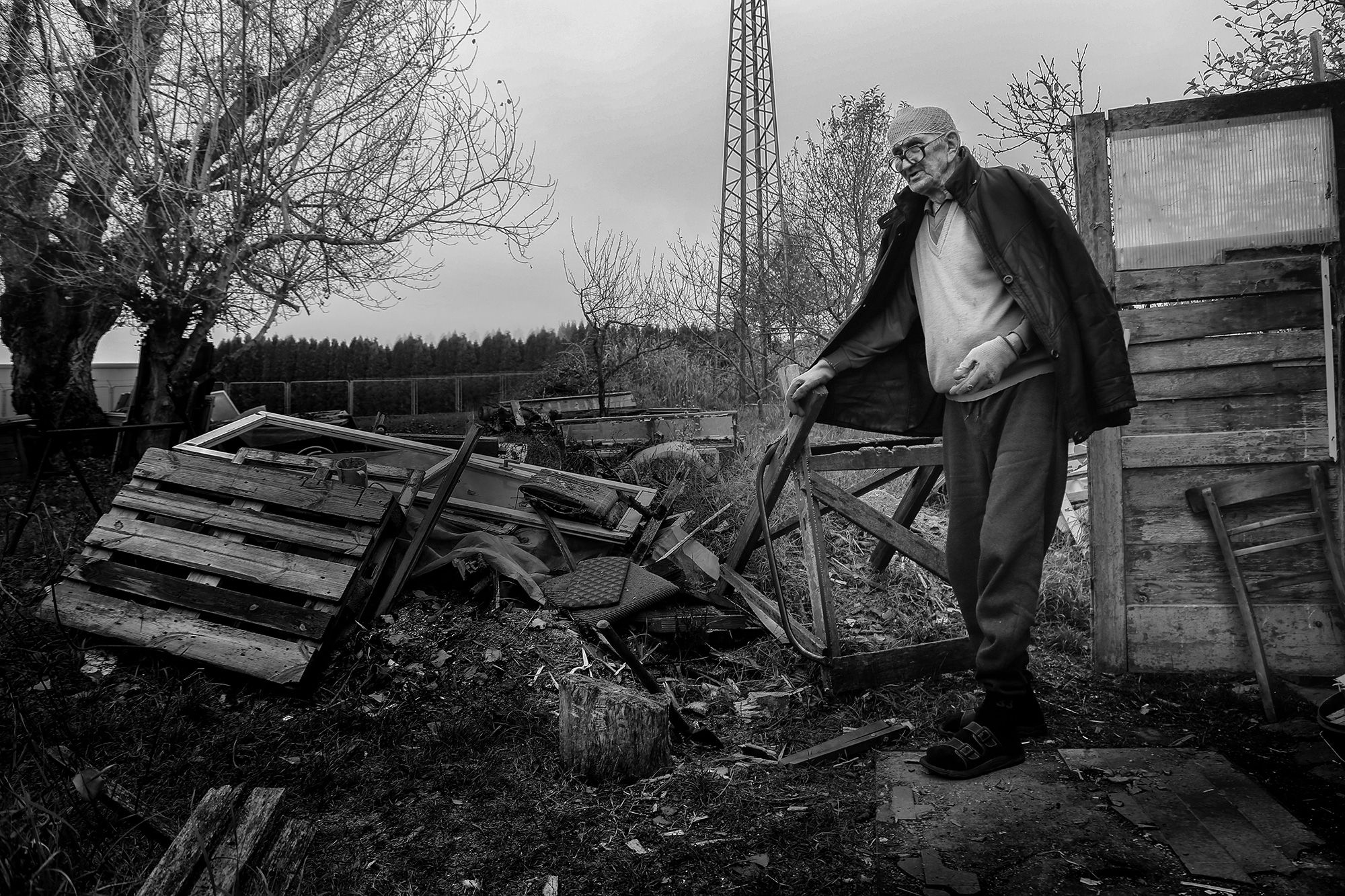Investigation Award How Holcim is polluting the air in Serbia with impunity
Milorad Ivanović, Serbia, June 30, 2021
The sound of a harsh cough can be heard coming from one of the houses on the main street in Beočin in northern Serbia, 15km west of Novi Sad, the capital of the province of Vojvodina. The cough is not caused by Covid-19, but by something just as bad.
 ©
Jan Valo
©
Jan Valo
“We can barely breathe anymore” complains Jovan Ignjatović, while he wipes a centimetre-thick layer of dust from his table. “This has gathered since yesterday”, he says. His house stands directly opposite the cement factory. The whole place is covered in a thick cloud of smoke. People here say that it’s toxic poison. The factory management claims that it is harmless steam.
Currently, approximately 7,000 people live in Beočin. The industrial town lies at the foot of the Fruška Gora mountain, a 90-minute drive from the capital Belgrade. The cement factory was bought from French company Lafarge in 2015 and merged with Holcim to become LafargeHolcim. In May, an announcement was made that the world's largest producer of construction materials would from then on be known simply as Holcim Ltd and its headquarters were moved to the tax haven of Zug.
Before the takeover, the Beočin cement factory was already one of the main polluters in former Yugoslavia, which was finally broken up in 2008. However, the decision taken by management shortly after the acquisition to stop running the ovens on natural gas in favour of the far cheaper and dirtier petroleum coke caused a significant deterioration of the situation. Petroleum coke is a by-product from oil refineries; burning it at extremely high temperatures produces high quantities of micro particles, sulphur dioxide and soot.
A look at the past
1839 the first cement factory started operations in Beočin. The famous bridge that links Buda with Pest in Hungary is one of the things was built with products from this original factory.
1946 the facility was nationalised and steadily expanded. In Yugoslavia the booming cement factory and the town surrounding it swiftly became a successful example of the communist model.
After the fall of the Milošević regime in 2002, the new democratic government privatised this industrial icon and sold it to the French company Lafarge.
Holcim has burnt hazardous waste and car tyres since 2018
Neighbouring countries Slovenia and Croatia – both EU member states – have already banned the use of these substances as fuels for environmental reasons. Holcim on the other hand went a step further: since 2011 it has been burning the whole municipality’s household waste in its ovens. In 2018, the factory also obtain authorisation to burn medical waste, car tyres and plastic.
On 21 November 2019 the province inspectorate for environmental protection visited the cement factory.
An assessment of the air emissions revealed that in the case of certain substances that are damaging to human health, there were significant breaches of the legal limits.
The inspectorate’s report, of which we have a copy, was sent directly to the responsible federal public prosecutor. One and a half years later, however, it remains unclear when – or indeed whether – a case against Holcim will be opened.
The environmental authorities analysed all available data for the period of 31 August to 21 November 2019. According to its findings, in September emissions of hydrogen chloride (HCI) exceeded the legal limit by 200% on 62 occasions. In October, alongside hydrogen chloride, the factory emitted sulphur dioxide (SO2), ammonia (NH3) and nitrogen oxide (NOx) in quantities that also exceeded the respective legal limits by over 200% on 847 occasions. In November, the quantities were even slightly higher.
Tonnes of officially toxic waste burnt
According to the inspectorate, in these three short months some 963 tonnes of waste were burnt. The waste is technically classified as toxic, but was not treated accordingly. The inspectorate’s report holds that Holcim should be obliged to take immediate measures to address the breaches of legal limits. In addition, on the last page it states that an official complaint on these illegal practices is to be lodged with the responsible court. Confronted with the findings of the report, a speaker from Holcim Serbia stated that “we complied with the decisions and recommendations made by the authorities at the time”. She refused to provide details, stating “we are not aware of any legal proceedings against us”.
Zlatko Todorčevski, an environmental activist from Beočin, considers that the investigative report and the allegations are a “political manoeuvre to distract attention”. “They are all just putting on a show”, he states. He reports “very plausible rumours” that the audit of the Holcim factory was nothing but a response to the increasing pressure from other Chinese factory operators, who are rumoured to be to blame for the environmental pollution in Serbia for which they – in contrast to their European competitors – have come under regular criticism in the media. “The authorities simply wanted to show that they have Holcim on their radar, but they don’t want to change anything about the situation”.
Given that there are no government-run waste incinerators in Serbia, for years part of the waste has been disposed of via cement factories – officially for purely environmental reasons, something that environmental groups contest. A representative of an organisation called Spasimo Beočin (‘Let’s save Beočin’) states that the air filters in Holcim ovens are designed for dust from cement, but not for the toxins that are released when toxic waste is incinerated. “They believe that the high temperatures destroy all toxic substances, but that is incorrect.” Spasimo Beočin is an association of concerned citizens that has been active since 2015. Members of the organisation do not act publicly and their names are unknown. They want this to remain the case – “otherwise we’ll face reprisals. Many of us work for the company, others have relatives or friends who earn their living there”, the critics of Holcim state by way of explanation for their wish for anonymity.
Environmental laws tailored to the tastes of foreign firms
Since its entry into Serbia, Holcim has enjoyed the full support of the local and national authorities, for the interests of large foreign investors has always been more important than those of nature and the population. This is also reflected in environmental legislation. Companies like Holcim’s concerns carry weight in the process of developing them, according to the representative of Spasimo Beočin.
“The fact that this cement factory likely does not actually violate any statutory regulations is the real scandal and our greatest tragedy”.
 ©
Jan Valo
©
Jan Valo
Goran Vučićević is an environmental activist in the nearby municipality of Novi Sad. He is also furious about the free reign that politicians have given Holcim. He has been monitoring the company’s activities in Beočin for a long time and considers that it now earns more money through waste incineration than it does through the production of cement. According to his calculations, annually some 10,000 tonnes of car tyres are incinerated for which the company is paid 3,600 Serbian dinar (CHF 34) per tonne. “Holcim receives 36 million dinar in government tax revenues for poisoning the country and people who paid the taxes in the first place”, says Vučićević.
When the cement factory was privatised 20 years ago, it had over 2,000 employees, most of whom lived in Beočin. Today there are only a few hundred left. “The company management and anyone else who could afford to moved away a long time ago”, reports the representative of Spasimo Beočin. The last manager also fled after the hazardous waste incineration business was set up recently. The formerly thriving industrial town is now a veritable ghost town.
Dilapidated castle in a decaying town
The German Eduard ‘Ede’ Spitzer was one of the first joint owners of the Beočin cement factory. In the 1880s, he commissioned the architect Imre Steindl – who also built the pompous Hungarian parliament building in Budapest – to build a castle for himself and his family to live in.
In 1941, the Spitzers moved back to Germany. After the Second World War, the castle was nationalised along with the cement factory and was subsequently used as a library, the headquarters of an NGO and a restaurant.
Film directors such as Brian Hutton or Emir Kusturica use the picturesque site as a filming location. For over ten years the Spitzer castle has been falling into disrepair and – after the boom years – has once again become a sad symbol of the destiny of the city.
Jovan Ignjatović is the only one of the dozen particularly heavily impacted inhabitants who publicly criticises the operators of the cement factory. The reason: “I’m simply too old to be afraid. Our friends and relatives should be able to continue working there, but they really must stop poisoning us” he demands and feeds his chickens while new clouds of dust settle on his land. Together with his neighbours he has lodged numerous complaints – with the factory, the environmental authorities and the community. After some back and forth, Holcim provided him with an unofficial compensation payment of nearly CHF 800 and that was it. “What am I supposed to do with this money? Previously they were talking about CHF 12,000 for resettlement, but nothing ever came of it”.
 ©
Jan Valo
©
Jan Valo
Holcim dictates the laboratory and timing of analyses itself
Like most people in Beočin, Ignjatović doesn’t want the community’s source of livelihoods to suffer the same fate as Holcim’s cement factory in Slovenia – that factory was forced to close for environmental reasons in 2015. In EU member states, companies must regularly monitor their emissions and disclose the results. In Serbia on the other hand, all the law requires is for companies to monitor waste air twice a year for the presence of highly toxic and carcinogenic substances like furan and dioxin. In addition, Holcim can decide both which laboratory collects and analyses the samples, and the timing of the tests.
“On the days in question they reduce the emissions of toxins and by doing so, they control the results of the monitoring” states our source from Spasimo Beočin. As a result, Zlatko Todorčevski, mentioned above, is calling for independent monitoring like in Slovenia: “The fact that the Serbian cement industry is allowed to monitor itself is more absurd than some of the regulatory situations in Africa. It flies in the face of all civilised standards, including Swiss standards”.
His role model is Uroš Macerl, who successfully fought against a similar environmental violation by a Holcim factory in his Slovenian hometown Trbovlje. Yet this came at the cost of closure of the factory, which is something the activists in Beočin want to avoid. “Without publicly accessible data on emissions we wouldn’t have stood a chance”, states the organic farmer, whose farm is located close to the cement factory that was shut down in 2015. In 2017, he was awarded the prestigious US Goldman Environmental Prize for this success, which led to far too many job losses.
A further important piece of evidence was a study by the Ljubljana oncology institute, which documented a significantly higher risk of cancer among residents of the locality of the cement factory as compared to the average population in Slovenia. Similar observations were made by the paediatrician Ilija Vukadinović his home community of Kosjerić in western Serbia, where the Belgian consortium Titan operates another cement factory. Vukadinović is a member of the local ‘Eco Group’ and since 2005 he has noted that “the air pollution caused by Titan is responsible for the fact that rates of lung cancer and other respiratory diseases among children and adults far exceed those of the national average”.
No official health data, but higher cancer mortality
For Beočin there is no official health data and none of the doctors we contacted were willing to provide an estimate. The only available data come from the town’s Serbian Orthodox cemetery. Of the 99 people who were laid to rest there from 2017 to 2019, 27 of them (i.e. 27.3%) died of cancer. In 2018, the figure was 36%. The average rate in Serbia for the same period was 21%.
Spasimo Beočin has over 3,000 followers on Facebook, some of whom are very active online. However, there have been no street actions or other public protests in the small town due to fears around reprisals or closure of the factory. Holcim’s critics are faced with a dilemma. It’s something that particularly the (mostly very young) activists from Kosjerić struggle to understand – and no wonder, because those were the means they used to successfully force Titan to make the commitment to cease incineration of toxic waste 15 years ago. “We couldn’t even get 20 signatures for a petition” explains the anonymous spokesperson of Spasimo Beočin. “They were all worried about their jobs, which I think is understandable. Without the Holcim factory our city would disappear from the map. So instead of defending themselves, the people would rather continue to be poisoned”.

Investigation Award
The author of this text, Milorad Ivanović, is the leading editor in the Belgrade office of the Balkan Investigative Reporting Network (BIRN), a coalition of media professionals and NGOs whose journalism focuses on the region and with members in six countries. The research project in Beočin was funded by Public Eye’s Investigation Award, which Milorad Ivanovic won at the end of 2020. The results are being published now due to various Covid-19-related delays. The third edition of our prize, which helps questionable practices of Swiss companies to be uncovered, is planned to take place in late 2022.

